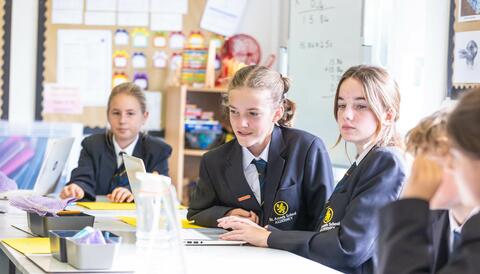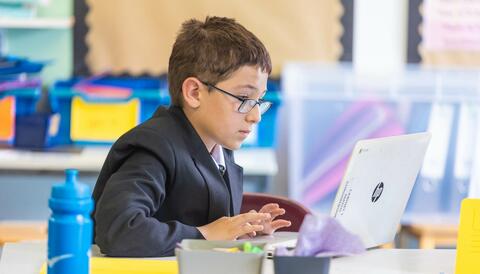KS3 - 2 Lessons Weekly:
The world depends on computers. Children and young people live in an age of fast-moving science, computing and technology. This area of learning is fundamental to exploring, understanding and influencing the natural and man-made worlds in which we live.
Areas Covered
- Digital Literacy
- Computer Science
- Digital Citizenship
Subtopics within will teach children skills in Presentations, Spreadsheets, Databases, Programming using Python, Scratch, Junior Javascript and Computational Critical Thinking.
Also, how to Keep Safe Online is a fundamental skill that every young person requires to protect themselves whilst being online.
St. Anne’s school also participates in well known Bailiwick competitions including Guernsey Design an Ad and Guernsey Eisteddfod, ICT and display.
KS4 - 3 Lessons Weekly
At GCSE level you will learn how computers work (architecture inside the computer), the networks they use and how programming can create solutions to everyday problems and future challenges.
Why choose Computer Science?
- Develop problem solving skills
- Learn through exploration
- Change the world
- Solve real-world problems
- Learn how to create your future
- Open the door to your future career
What will you study?
Component 1
- Systems Architecture
- Memory & Storage
- Computer Networks
- Connections & Protocols
- Network Security
- Systems Software and Ethical, Legal, Cultural & Environmental Impacts of Digital Technology
Component 2
- Algorithms, Programming Fundamentals
- Producing Robust Programs
- Boolean Logic
- Programming Language and Integrated Development Environments
Develop Programming Skills
As part of the course you will learn to program. Programming is a very important skill to learn.
It helps to:
- Break down problems effectively
- Solve complex problems
- Think logically
- Learn through exploration
How will you be assessed?
Two exams, 1.5 hours each, equally weighted for 80 marks each.


